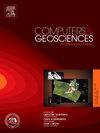FourCastLSTM: A precipitation nowcasting model integrating global and local spatiotemporal features
IF 4.4
2区 地球科学
Q1 COMPUTER SCIENCE, INTERDISCIPLINARY APPLICATIONS
引用次数: 0
Abstract
Accurate precipitation nowcasting is crucial for transportation, agriculture, urban planning, and tourism, and it is highly beneficial in disaster prevention, resource allocation, and service optimization. Existing precipitation nowcasting methods often integrate convolution neural networks and recurrent neural networks or employ vision transformers to capture spatiotemporal correlations. However, convolutional operators struggle to capture global information, and vision transformers based global modeling may overemphasize heavy rainfall while neglecting moderate and light precipitation. In this study, Fourier nowCasting LSTM (FourCastLSTM) is introduced to effectively capture and fusion spatiotemporal global and local features of precipitation, enhancing prediction accuracy for different precipitation intensities. A Fourier nowCasting LSTM Cell (FourCastCell), which combine the Adaptive Fourier Neural Operator (AFNO) with a simplified LSTM, is proposed to reinforce the representation of global spatiotemporal precipitation patterns by replacing traditional convolutional layers with AFNO. An Image Detail Enhancement module (IDE) is adopted to strengthen local precipitation detail features by integrating difference convolutional neural network. Finally, the adaptive feature fusion module embedded in the IDE, can dynamically adjust the integration weights of global and local features based on the specific spatiotemporal features of precipitation events, ensuring a balanced fusion of features with different intensities. Experiments on synthetic datasets (MovingMNIST++) and real-world datasets (RadarCIKM) demonstrate that the proposed FourCastLSTM outperforms state-of-the-art approaches by 15.6 % and 9.6 % in B-MAE and B-MSE metrics, respectively.
结合全球和局地时空特征的降水临近预报模式
准确的降水临近预报对交通、农业、城市规划、旅游等具有重要意义,对防灾减灾、资源配置和服务优化具有重要意义。现有降水临近预报方法通常将卷积神经网络和递归神经网络相结合,或采用视觉变换来捕获时空相关性。然而,卷积算子难以捕获全局信息,基于视觉变换的全局建模可能过度强调强降雨,而忽略了中度和轻度降水。本研究引入傅里叶临近浇铸LSTM (FourCastLSTM),有效捕获和融合降水的时空全球和局部特征,提高了不同降水强度的预测精度。将自适应傅里叶神经算子(AFNO)与简化的LSTM相结合,提出了一种Fourier nowCasting LSTM Cell (FourCastCell),通过AFNO取代传统的卷积层来增强全球时空降水模式的表征。采用图像细节增强模块(IDE)集成差分卷积神经网络增强局部降水细节特征。最后,IDE中嵌入的自适应特征融合模块可以根据降水事件的具体时空特征动态调整全局特征和局部特征的积分权重,保证不同强度特征的均衡融合。在合成数据集(MovingMNIST++)和真实数据集(RadarCIKM)上的实验表明,所提出的FourCastLSTM在B-MAE和B-MSE指标上分别优于最先进的方法15.6%和9.6%。
本文章由计算机程序翻译,如有差异,请以英文原文为准。
求助全文
约1分钟内获得全文
求助全文
来源期刊

Computers & Geosciences
地学-地球科学综合
CiteScore
9.30
自引率
6.80%
发文量
164
审稿时长
3.4 months
期刊介绍:
Computers & Geosciences publishes high impact, original research at the interface between Computer Sciences and Geosciences. Publications should apply modern computer science paradigms, whether computational or informatics-based, to address problems in the geosciences.
 求助内容:
求助内容: 应助结果提醒方式:
应助结果提醒方式:


